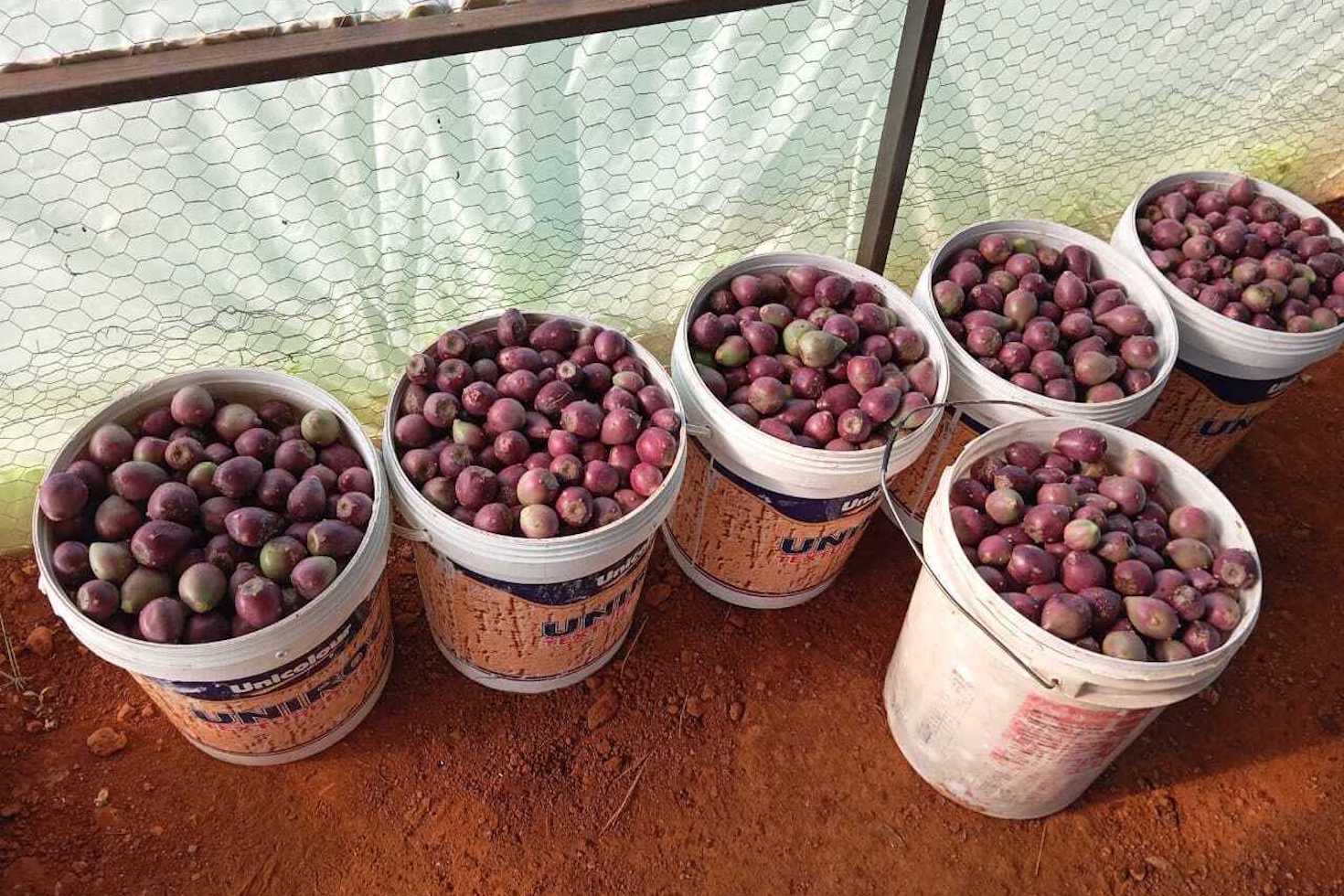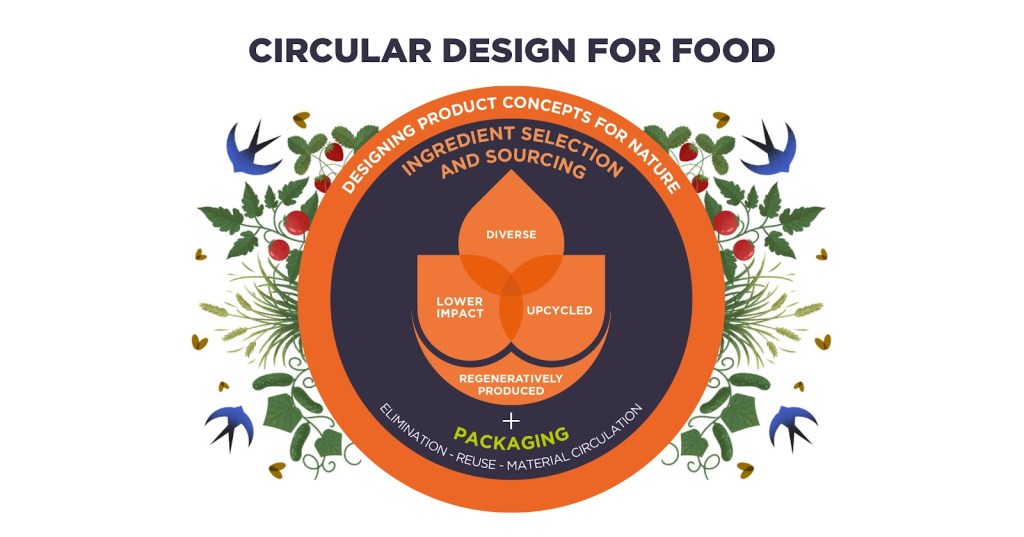
May the meals we eat be an answer, moderately than a contributing issue to, the local weather and biodiversity crises?
That is the query that prompted the Large Meals Redesign Problem — an accelerator challenge created by the Ellen MacArthur Basis, in partnership with the Sustainable Meals Belief.
After we final introduced Trellis readers information of the challenge in February, contributors had been nonetheless eager about methods to flip their designs into actuality. 186 merchandise had been initially entered into the problem; this complete was whittled down to simply over 160 by way of a judging course of that seemed on the extent to which product plans match our round design for meals framework. This strategy has been created to information design decisions consciously made to regenerate landscapes. On condition that the meals system contributes to one-third of greenhouse gases and is the main driver of biodiversity loss, the potential influence of this work is large.


We prioritized merchandise that might display that they had been sourced from manufacturing programs designed to create regenerative outcomes. Merchandise additionally needed to fulfill no less than one design class within the framework— by utilizing decrease influence, upcycled and/or various substances. Lastly, we had been searching for packaging freed from problematic (polluting) supplies.
We additionally used the sustainability evaluation device Latis to supply quantitative information about ingredient decisions.
Now effectively into the manufacturing part, over 60 firms are at the moment working by way of points similar to securing provides and testing recipes. By February, retailers the world over will likely be stocking these groundbreaking merchandise, designed with nature in thoughts.
We’ve been following the progress of a particular band of those meals pioneers to see what they encounter on their journey to market. This can allow us to assist different meals firms scale up the marketing campaign to make nature-first meals. A brand new sequence of video diaries from contributors focuses on the challenges and triumphs concerned in altering the meals system.
The primary episode options Large Meals Redesign Problem contributors from all over the world. Every of those small companies are searching for methods to utilize substances that hardly ever make it into the meals chain. By designing to scale back waste on this manner, they’ll unencumber land for pure habitats, make higher use of the vitality that goes into rising crops and rearing animals, and generate potential for an additional income stream for a farmer.
Kenyan firm Dunia Bora is utilizing the cactus plant to make cookies and juice. Though a well-liked meals in Mexico and North America, the crop is commonly left to waste in Africa. Dunia Bora founder Vincent Muhoro’s mom fed it to him as a toddler, inspiring him to now search for methods to make use of it as an ingredient. The cactus is dried and milled to make flour for cookies, whereas the fruit turns into juice.


Weeks of torrential rainfall within the Laikipia area of Kenya in April offered a graphic illustration of the necessity for farming practices to alter with a purpose to each mitigate and adapt to local weather change. Muhoro was unable to entry the cactus crops throughout this era.
Now the realm is predicted to have 9 months of drought, which ought to have minimal influence on the cacti. The crops want little or no cultivation or water, thrive in arid soils and draw carbon from the ambiance, storing it within the soil. This adaptability demonstrates the local weather resilience worth of the cactus plant, seen in every single place in Kenya.
Muhoro’s subsequent problem is to realize the official certification from the Kenyan authorities which can permit him to proceed with manufacturing.
Giving again to the land, water and air
In the UK, Spoon Cereals has used the assist of the Problem to repurpose a byproduct from the manufacturing of oak milk into oats for porridge.
Often these oats could be destined for anaerobic digestion (damaged down by microorganisms) or animal feed, however capturing this ingredient for human consumption ensures substances are stored at their highest worth.
The model can also be experimenting with utilizing the various black oat selection, which wants little fertilizer and no chemical compounds to develop — instance of regenerative manufacturing. Black oats are additionally useful in fields as a canopy crop, a plant grown for its capability to carry out duties similar to stopping erosion of the soil and constructing its fertility.
Spoon Cereals already has its granola product on U.Okay. grocery store cabinets, so it has the benefit of established retailer relationships and shopper recognition. However it should negotiate enough sourcing of upcycled oats and black oats earlier than it will possibly get its nature-first product off the bottom.
Brazilian enterprise Nutricandies is within the technique of scaling up its operations with a purpose to convey its different chocolate unfold to market. It’s made utilizing chocolate produced from agroforestry programs in Bahia, and sweetened utilizing cacao honey, a byproduct of the chocolate-making course of.
Nutricandies CEO Gustavo Rocha is specializing in migrating his operations out of the laboratory and right into a manufacturing unit unit — funds from the grant awarded to him by the Problem are serving to to assist this.
Subsequent spring we’ll replace Trellis readers additional on our learnings from this distinctive challenge, together with particulars of how contributors audited the regenerative manufacturing strategies of suppliers, and marketed their nature-first fare. Within the meantime, be careful for 4 extra episodes of the video diaries, as we doc their progress.